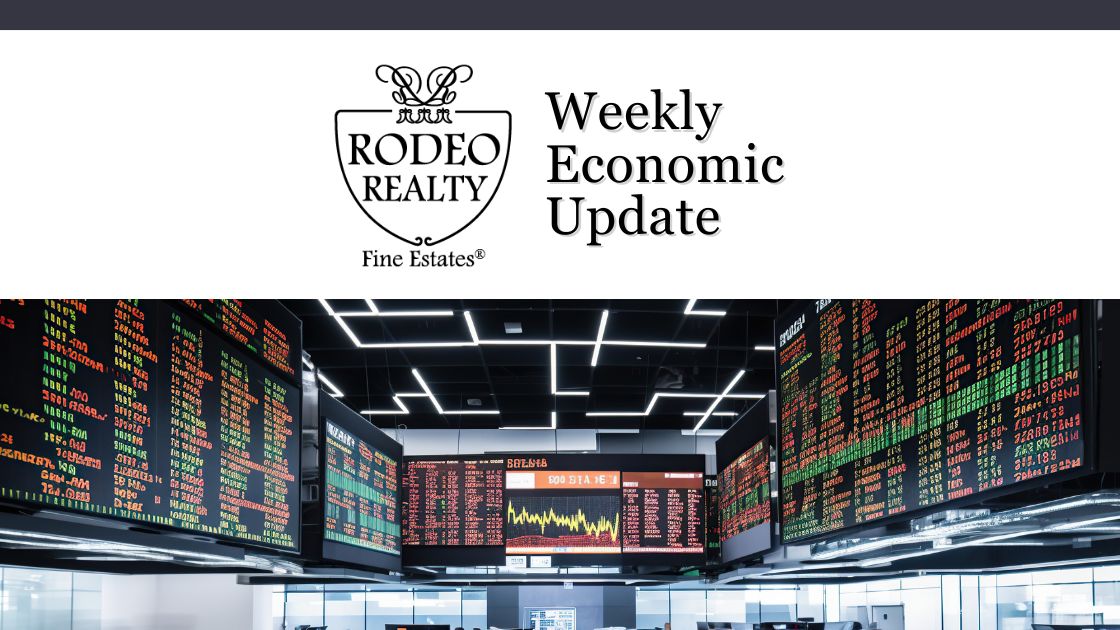Economic news for the week – Following last Friday’s jobs report where the unemployment rate came in at 4.3% a panic hit global markets. This was not due to 4.3% being a high unemployment number, it was because of the speed in which the unemployment rate has risen from 3.6%, a 60-year low, to the current 4.3%. In the past, a .5% jump in the unemployment rate average in a 3-month period over the previous 3-month period was a signal of a recession starting. Global and US markets sold off on Monday due to fears that the U.S. may be heading to a recession. For example, the Dow was down 1,000 points on Monday after falling over 700 points last Friday. Fortunately, by Tuesday investors were beginning to feel that recession fears were overblown and that the Sham Rule, named after the person, who found that a .5% jump in unemployment over consecutive 3-month periods signals a recession, may not be something to rely upon when the initial 3-month period begins with near-historic low unemployment levels. On Tuesday markets began to settle. On Thursday markets jumped and made up most of Monday’s huge losses when first-time unemployment claims came in well below expectations, solidifying the feeling that unemployment fears were overblown. Next week is going to be a big week for economic news. We have two inflation gages coming out. PPI (Producer Price Index) which shows wholesale price inflation and CPI (Consumer Price Index) which shows consumer price inflation. The Fed will be lowering interest rates. Depending on the level of inflation, and the unemployment rate, it’s just a matter of how far and how fast they will come down from the current “restrictive” 25-year highs to less restrictive levels.
Stock markets dropped sharply this week on recession fears – The Dow Jones Industrial Average closed the week at 39,497.54, down 0.6% from 39,727.26 last week. It is up 5.4% year-to-date. The S&P 500 closed the week at 5,344.16, unchanged from 5,346.56 last week. The S&P is up 12.2% year-to-date. The Nasdaq closed the week at 16,745.30, unchanged from 16,776.16 last week. It is up 11.8% year-to-date.
U.S. Treasury bond yields dropped sharply this week – The 10-year treasury bond closed the week yielding 3.94%, up from 3.80% last week. The 30-year treasury bond yield ended the week at 4.23%, up from 4.11% last week. We watch bond yields because mortgage rates follow bond yields. Even though bond yields are up for the week, they are well below where they were two weeks ago. Last Friday, the 10-year dropped from 4.18% the week before to 3.8% within hours after the unemployment rate was released. On Monday, the 10-year hit 3.68%, its lowest level in a year. Unfortunately, as investors began to feel that the panic was overblown, they left the safety of bonds and went back to stocks. As stock markets recovered U.S. bond yields went back up.
Mortgage rates – Every Thursday Freddie Mac publishes interest rates based on a survey of mortgage lenders throughout the week. The Freddie Mac Primary Mortgage Survey reported that mortgage rates for the most popular loan products as of August 8th, 2024, were as follows: The 30-year fixed mortgage rate was 6.47%, down from 6.73% last week. The 15-year fixed was 5.63%, down from 5.99% last week.
The graph below shows the trajectory of mortgage rates over the past year.

Freddie Mac was chartered by Congress in 1970 to keep money flowing to mortgage lenders in support of homeownership and rental housing. Their mandate is to provide liquidity, stability, and affordability to the U.S.
July home sales figures will be released next week by the California Association of Realtors and the following week by the National Association of Realtors. You can get that data now for your county, city, or zip code at RodeoRE.com.
Have a great weekend!
